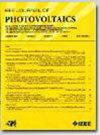开发空气污染对工业用太阳能光伏发电量影响的经验模型
IF 2.5
3区 工程技术
Q3 ENERGY & FUELS
引用次数: 0
摘要
缺乏用于估计空气污染对太阳能发电量影响的实用模型,这给太阳能发电量的预测带来了挑战,并给太阳能发电厂的融资和保险带来了更多的不确定性。虽然人们对气溶胶引起的辐照度衰减的物理原理很了解,但复杂的大气条件和缺乏详细的大气测量使工业或小型太阳能用户无法计算其对光伏发电的影响。很少有简单的实证模型来量化真实世界观察的总体效果。在这项研究中,我们利用实验方法和来自15多个地点的大规模真实世界观测数据,仅使用常见的天气参数,实证评估空气污染对光伏发电的影响。我们发现,PM2.5对辐照度的影响,因此,在PM2.5的低水平和中等水平下,光伏输出大致呈线性,在晴朗的天空条件下,增加100微克/立方米,相对减少约15±5%,这与之前文献报道的初步结果大致一致。这种影响在PM2.5浓度超过300微克/立方米时饱和,在云层覆盖率高时减弱。本研究中制定的方法为建立标准的共同基础提供了一条可行的途径。就广度和深度而言,所获得的结果是迄今为止使用地面观测进行的类似实证研究中最全面的。它们为光伏行业从业者建立功能模型提供了基础。本文章由计算机程序翻译,如有差异,请以英文原文为准。
Toward the Development of an Empirical Model of Air Pollution Impact on Solar PV Output for Industry Use
The absence of practical models for estimating the impact of air pollution on solar output presents a challenge for forecasting of solar electricity production and creates more uncertainty for financing and insuring solar plants. While the physics of irradiance attenuation due to aerosols are well understood, complex atmospheric conditions and lack of detailed atmospheric measurement make them impractical for industry or small-scale solar users to calculate its impact on PV power generation. Simple, empirical models to quantify the overall effect from real-world observations are scarce. In this study, we make use of both the experimental approach as well as large-scale real-world observational data from more than 15 sites to empirically evaluate the impact of air pollution on PV production using only common weather parameters. We show that the impact of PM2.5 on irradiance and, hence, PV output is approximately linear at low and moderate levels of PM2.5, with a 100 μg/m
3
increase corresponding to a reduction of around 15 ± 5% relative under clear sky conditions, which is broadly consistent with previous preliminary results reported from literature. This effect saturates at higher PM2.5 concentrations beyond 300 μg/m
3
and is reduced at high cloud coverage. The methodology developed in this study represents a viable path towards establishing a common ground for standards. The results obtained are the most comprehensive so far in terms of breadth and depth among similar empirical studies using ground-based observations. They provide a basis for establishing a functional model for industry practitioners in the PV community.
求助全文
通过发布文献求助,成功后即可免费获取论文全文。
去求助
来源期刊

IEEE Journal of Photovoltaics
ENERGY & FUELS-MATERIALS SCIENCE, MULTIDISCIPLINARY
CiteScore
7.00
自引率
10.00%
发文量
206
期刊介绍:
The IEEE Journal of Photovoltaics is a peer-reviewed, archival publication reporting original and significant research results that advance the field of photovoltaics (PV). The PV field is diverse in its science base ranging from semiconductor and PV device physics to optics and the materials sciences. The journal publishes articles that connect this science base to PV science and technology. The intent is to publish original research results that are of primary interest to the photovoltaic specialist. The scope of the IEEE J. Photovoltaics incorporates: fundamentals and new concepts of PV conversion, including those based on nanostructured materials, low-dimensional physics, multiple charge generation, up/down converters, thermophotovoltaics, hot-carrier effects, plasmonics, metamorphic materials, luminescent concentrators, and rectennas; Si-based PV, including new cell designs, crystalline and non-crystalline Si, passivation, characterization and Si crystal growth; polycrystalline, amorphous and crystalline thin-film solar cell materials, including PV structures and solar cells based on II-VI, chalcopyrite, Si and other thin film absorbers; III-V PV materials, heterostructures, multijunction devices and concentrator PV; optics for light trapping, reflection control and concentration; organic PV including polymer, hybrid and dye sensitized solar cells; space PV including cell materials and PV devices, defects and reliability, environmental effects and protective materials; PV modeling and characterization methods; and other aspects of PV, including modules, power conditioning, inverters, balance-of-systems components, monitoring, analyses and simulations, and supporting PV module standards and measurements. Tutorial and review papers on these subjects are also published and occasionally special issues are published to treat particular areas in more depth and breadth.
 求助内容:
求助内容: 应助结果提醒方式:
应助结果提醒方式:


